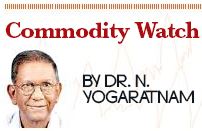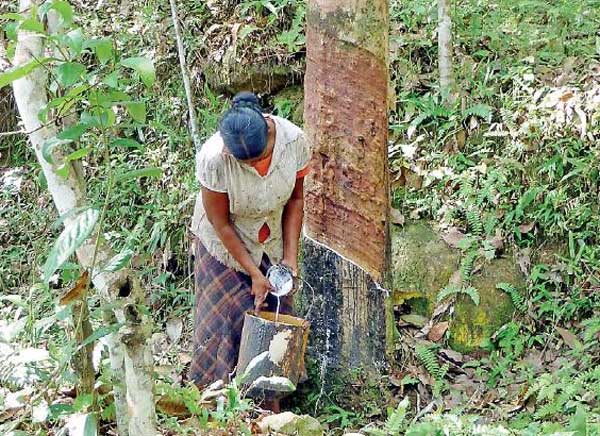Reply To:
Name - Reply Comment

In June 2014, monthly averages for natural rubber were $2.09 per kg (RSS3 grade) and $1.71 per kg (TSR20 grade).Seventy percent of the world’s natural rubber production is purchased by tyre manufacturers. The average passenger car t yre contains 15-18 percent natural rubber, while a heavy truck tyre contains 40 percent. Majority of natural rubber is produced in Southeast Asia, with Indonesia, Thailand and Malaysia accounting for almost 70 percent of global production.
Natural rubber is made from latex, a liquid that flows from the bark of the rubber tree. Although many plants produce latex, so far only natural rubber lends itself to economically efficient farming and provides t he right level of performance. The many properties of natural rubber cannot be fully reproduced in laboratories.
Rubber prices are volatile and are influenced by many factors. Over the past decade natural rubber prices have increased three to four fold, from less than $1 per kg to above $4.5. The elevated price volatility following the 2005-2008 commodity boom caused concern to both international organisations and policymakers. The volatility of natural rubber prices, as a general rule, tends to be more volatile than other mainstream commodities.
Following the news of an Ebola outbreak i n West Africa at t he beginning of last year , share prices of rubber gloves have risen by 5-10 percent.
Any significant development in the situation or a full-scale Pandemic would further boost worldwide healthcare awareness and could potentially spark a surge in demand for natural rubber examination gloves, given that they remain as the most affordable and fundamental form of protection against diseases.
The World Bank commodities price forecast i n (nominal) US dollars indicates that Malaysian rubber will reach $2.40 per kg in 2015 and $2.44 per kg in 2016.
Swelling output
With modest recovery i n t he automobile sector this year, the demand for rubber may grow at a slow pace
The natural rubber market is dominated by Asia in general and South-East Asia in particular. With the market currently in a state of oversupply and slow growth i n global demand forecast in 2015, natural rubber is likely to be steady in the coming months unless, of course, some of the lurking bullish and bearish factors begin to play out.
It is expected that the supply outlook is benign with production growth expected t o be steady. However, the market in surplus allows for stock build-up. SouthEast Asia’s dominance in world production continues with Thailand’s share of 32 percent followed by Indonesia’s 27 percent.
The share of Vietnam, India, Malaysia and China is about 7 per cent each.
As new trees planted in Asia a few years ago are at full yield, the market is in a structural phase of expanding supplies.Of course, there are ageing trees as well that yield less; yet loss from old and senile trees is more than compensated by the high productivity of young trees.However, production growth cannot be taken for granted. The weather is now turning out to be a big risk, with El Nino evolving. Also, governmental interventions are not unusual. At the same time, weakening currencies help boost exports.
Demand outlook
From a demand perspective, 2015 is likely to be one of slow growth. Of course, with over 70 percent share in world demand, Asia will drive the rubber market.
China, the dominant player, accounts for 36 per cent of global demand while India’s share is 9 per cent; Japan 6 per cent and the rest of Asia 21 per cent.
Factors that drive demand include forecast of a moderate recovery in automotive demand, especially in the US and Europe.
According to industry experts, global light weight vehicle sales are likely to be the strongest since 2010 and China will drive growth significantly.
The principal input for automobile tyre is rubber. Tyre demand is said to have entered a recovery phase with replacement demand and improving new car sales.
At the same time, the outlook for synthetic rubber is not bullish. Butadiene prices are drifting lower, while butadiene capacity is rising.
So, the question is: Will demand shift from synthetic t o natural rubber? Can Chinese demand give a strong boost to the market?
To be sure, China’s i mports are expanding; at the same time, warehouse stocks too are rising sharply, currently estimated to be around 200,000 tonnes.
On the back of fundamentals, rubber prices have of course been under pressure for the last several months, most of the time trading under $2/kg. On current reckoning, prices in 2015 will average $2 with a potential to rise by 5-7 per cent in 2015 /2006.
As the Indian domestic market integrates with the global market, global price pressures are felt in India too. Prices of RSS-4 have fallen in the last two years to levels (around 150/kg) that have upset growers.
To protect domestic producers, in December 2013, the government of India revised the import duty on dry forms of natural rubber to 20 per cent or 30/kg, whichever is lower (from 20 per cent or 20/kg, whichever is lower).
As rubber demand exceeds domestic supply, Indian i mport volumes have been rising. From about 197,000 tonnes in 2011-12, imports expanded to 214,000 tonnes by 2013-14.Estimated imports during fiscal 2014-15 are significantly higher at close to 300,000 tonnes.
Risks
Looming bullish and bearish factors cannot be overlooked. Sustained global economic recovery can spur demand, while low prices can encourage more demand substitution from synthetics. The weather risk t o production in the form of El Nino cannot be overlooked either.
South-East Asia has been facing dry conditions for the last four months. At the same time, weaker producers’ currencies can boost exports. The Chinese economy is already showing signs of slowing. What if tyre demand weakens as liquidity gets tighter? The market could come under additional pressure.
ITRC-CLMV meeting
A meeting amongst the major producing countries of natural rubber (NR) from t he ASEAN region was held on 26 February 2015 in Bandung, Indonesia.
The meeting was attended by senior officials of the International Tripartite Rubber Council (ITRC) member countries i.e. Thailand, Indonesia and Malaysia as well as from Cambodia, Lao PDR and Myanmar.
The 6 NR producing countries discussed prevailing NR market situations and market sentiments. Together, the ITRC member countries, Cambodia, Lao PDR and Myanmar, currently account for close to 70 percent of global NR production.
The 6 countries reiterated their commitment for closer collaboration and cooperation with a view towards strengthening NR price and ensuring remunerative income for the benefit of NR smallholders in the region. In this regard, the 6 countries agreed to develop a work plan aimed at strengthening NR prices. (The writer can be contacted at [email protected])
